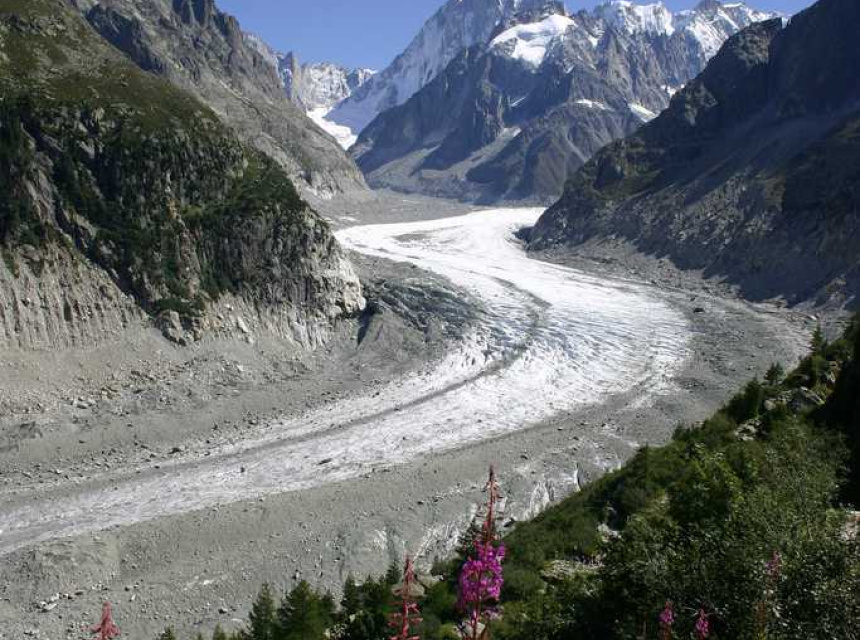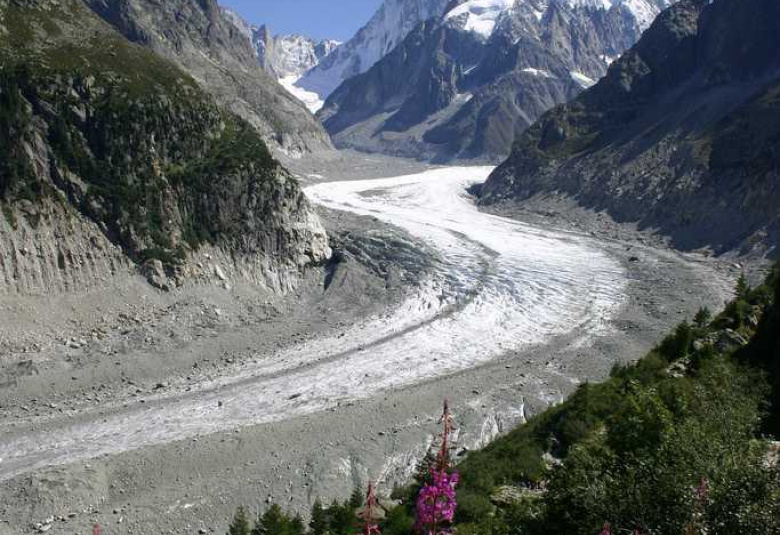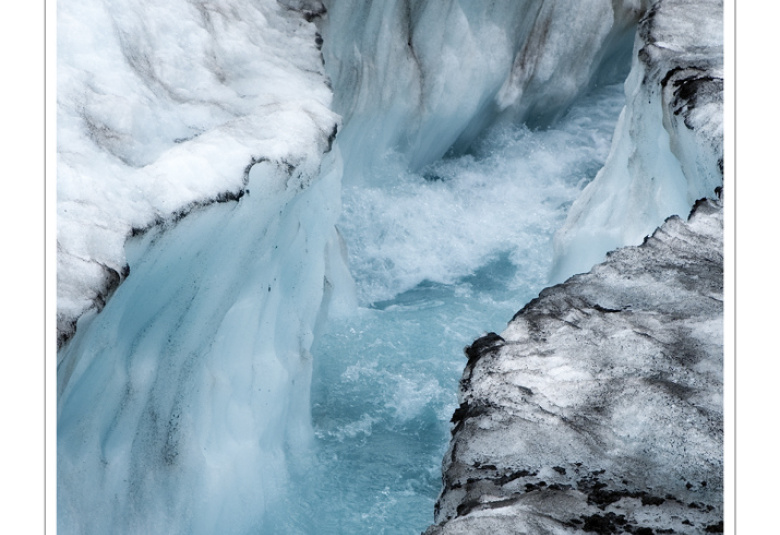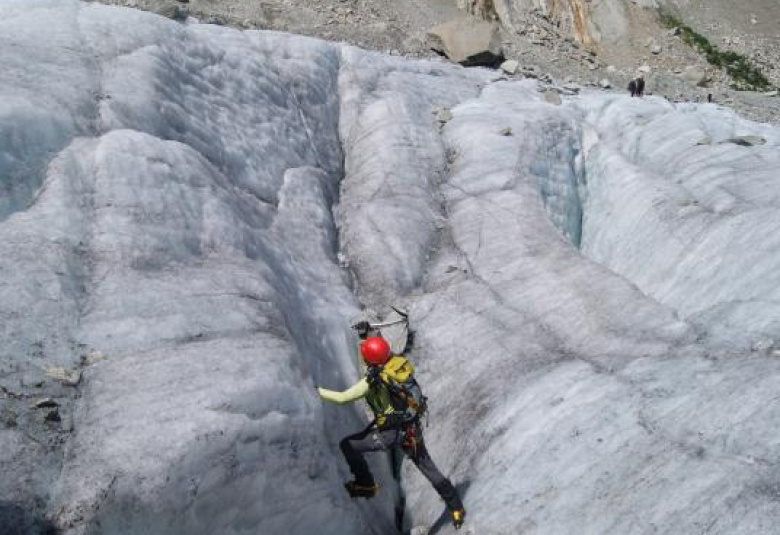There are 7 major glaciers and several minor ones in the Chamonix valley. The Mer de Glace (sea of ice) is the second largest glacier in the Alps (the largest being the Aletsch Glacier, Switzerland). It is estimated to contain approx 4000 million cubic metres of frozen water; it is 12km long and varies in width from 700m - 1950m.
The average depth of the ice is 240m with a maximum 420m just down stream of the glacier du Geant. The Mer de Glace moves forward 90m per year, or 1cm per hour. During the 20th century all alpine glaciers receded. The Mer de Glace recedes 7.5m every year on average.
Seracs of a glacier
Rates of flow vary, as do patterns of advance and retreat. Around 1700, during a period of severe winters, The Mer de Glace threatened to obstruct the Arve valley. Local inhabitants resorted to "exorcism" of the evil glacier spirits in the hope of halting the great wall of ice. In 1825 Les Bois village was evacuated. The glacier terminated in a wall of ice about 40m high.
In summer, the torrent under the glacier hollowed out an immense arch at its base, the "Arveyron Cave". From 1826 the glacier retreated, melting this once famous tourist attraction by 1873. The river Arve is a good example of a Glacial torrent. Much of the year, it is a milky green colour from a heavy suspension of finely ground rock particles.











